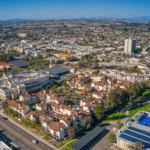Neurodiversity: What It Means, Why It Matters
BY RONIT MOLKO, PH.D., BCBA-D
STRATEGIC ADVISOR, LEARN BEHAVIORAL
If there is one enduring hallmark of the American experience, it’s the immense diversity found within our expansive borders. Most of the time, we perceive diversity via differences in skin color, language, clothing, places of worship, or even the foods people eat when gathered around the table with their families. There is, however, one major aspect of diversity that is often overlooked—one that comes as no surprise, considering it cannot be detected solely through visual means. I am, of course, referring to neurodiversity.
Coined in the late 1990s by sociologist Judy Singer—who is on the autism spectrum—neurodiversity is a viewpoint that characterizes brain differences among individuals as normal, rather than as a disability. This viewpoint reduces stigmas around learning and thinking differences, while calling attention to the ability of neurodivergent communities to benefit from multiple perspectives and make greater contributions to society. Central to the movement is a rejection of the idea that these unique individuals need to be cured or fixed. Instead, it’s held that people possessing different types of brains need to be embraced and provided support systems that allow them to participate and contribute as members of the community to the best of their ability.
Grounded in Science
Unsurprisingly, the foundations of this not so new movement are grounded firmly in science and empirical study. By leveraging MRI results from hundreds of individuals, researchers have been able to compare the brains of people diagnosed with learning differences to their counterparts. So far, studies have shown that the brains of neurodivergent individuals are, in fact, unique. For example, the part of the brain that maintains language processing works differently for people diagnosed with dyslexia. Additionally, the prefrontal cortex, which manages executive functioning and attention, develops much slower in children diagnosed with ADHD. In other words, these individuals are not necessarily operating with a learning deficit but rather possess brains that are literally wired differently.
A Neurodiverse Population
Whether a group of kids recently diagnosed with autism or adults still grappling with ADHD or dyslexia, the American neurodiverse population is quite substantial. According to a 2021 report from the Center for Disease Control and Prevention, one in every 44 children in the United States is diagnosed with some sort of autism spectrum disorder, and an estimated 5.4 million adults—or roughly 2.2 percent of the entire population—fall somewhere along the spectrum. Many people on the spectrum have contributed (or still do) to their communities every day, such as Albert Einstein, Anthony Hopkins, Henry Cavendish, Greta Thunberg, Jerry Seinfeld, and Elon Musk. They have been among the world’s highest achievers, impacting the arts, sciences, technological innovation, and activism.
In much the same way as the neurotypical population, the neurodivergent population is broad, diverse, and multidimensional. It’s crucial, then, for the public not only to embrace their different brethren but also to actively promote opportunities for them both in society and in the workplace at all abilities and levels.
Fortunately for society writ-large, corporate America is starting to take notice. A recent article published in the Harvard Business Review named neurodiversity as a bona fide “competitive advantage,” noting the unique and, often, incomparable output provided by atypical members of their workforce. Numerous companies, including Hewlett-Packard, Enterprise, Microsoft, SAP, and Ford, have recently begun to reform their HR practices in an effort to expand neurodiversity in their ranks by identifying, hiring, and empowering these unique individuals. The results, so far, have been outstanding, with managers noting legitimate “productivity gains, quality improvements, boosts in innovative capabilities, and broad increases in employee engagement.”
Diversity of all kinds, including neurodiversity, strengthens our daily institutions. Just as we are seeing a focus on diversity, equity, and inclusion (DEI) in employment and other areas of life and commerce, we must also remember that recognizing and celebrating differences, promoting justice and fairness, and ensuring true support and inclusion applies not only to people with observable differences but also to our neurodiverse populations. Not all cognitive differences are visible, and it’s crucial to keep in mind that there’s more than meets the eye when it comes to true diversity.
In another blog post, Dr. Molko explains the history and evolution of applied behavior analysis (ABA) therapy. Read the story.







